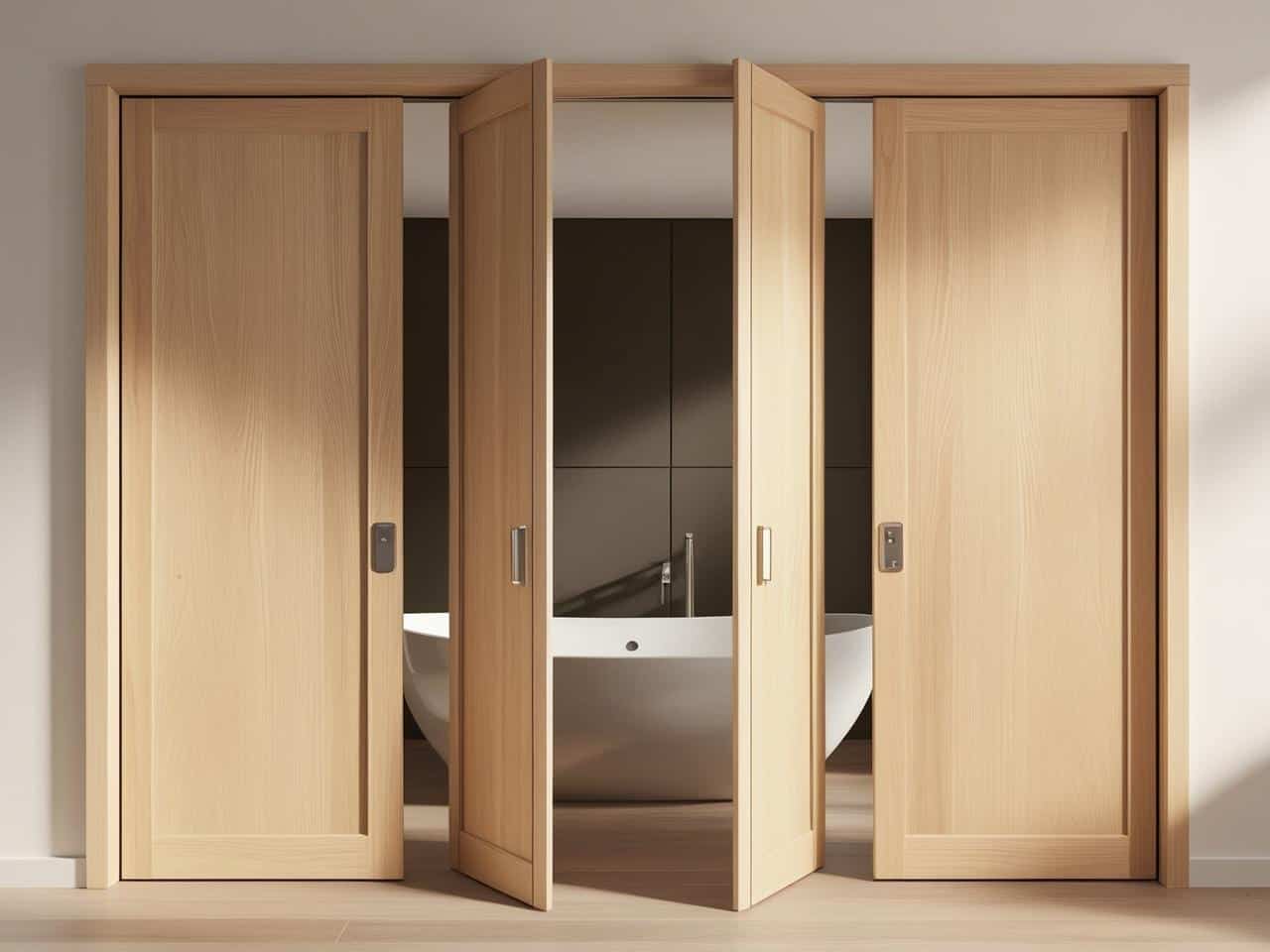Pocket doors are popular with designers and homeowners wishing to save space while adding elegance to their houses. We frequently see pocket doors connecting a bedroom to a bathroom or a utility room to a kitchen, and they have a sleek and sophisticated appearance.
These doors may be utilized in both traditional and modern contexts and are a great space saver. However, what factors should you consider before choosing this style of door for your bathroom? Are pocket doors for bathroom entrances a good idea?
Read on to see if this door style is appropriate for your bathrooms.
What Is a Pocket Door?
A pocket door is a sliding door that, when fully opened, vanishes into a gap in the framing or wall. Pocket doors are suspended from the ceiling and glide along an overhead track or over the floor. This design is great for creating a sophisticated architectural impact in a bathroom or when there is not enough space for a hinged door to swing. Depending on the desired width of the entryway, single or double-door versions are used.
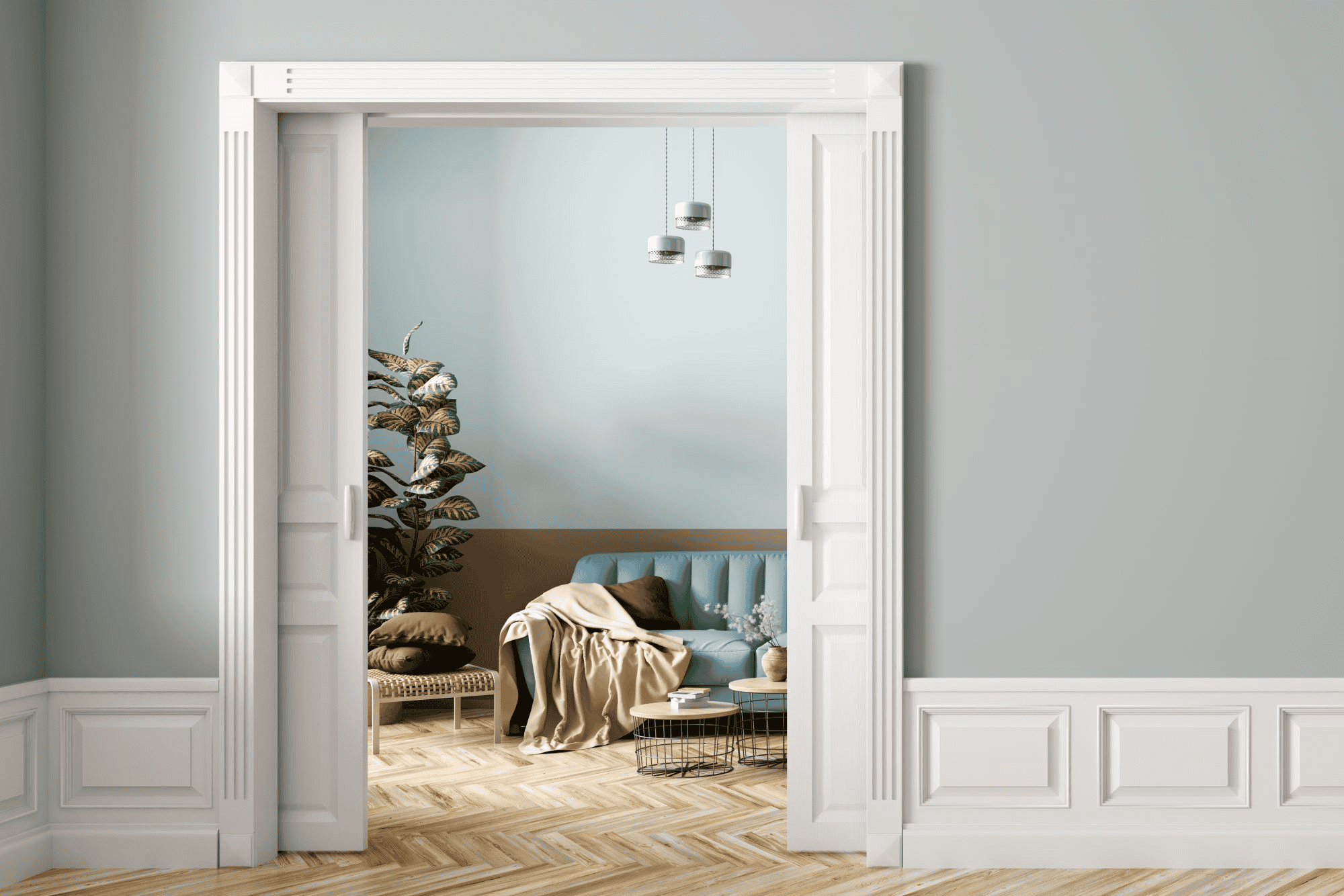
Image Source: marthastewart.com
Pocket doors are ideal for spaces with limited square footage because they provide up to 10 square feet of useable floor space that an open swing door would otherwise occupy. There may be extra installation considerations, but the space saved by eliminating a standard door swing could make a significant difference between one bathroom setup and another.
Furthermore, a pocket door connects the bathroom and other rooms without taking up the space required for a hinged door to swing inward or outward. So, you might use the extra space for a larger room arrangement. This can result in a larger shower, more floor space in both the bedroom and the bathroom, or improved overall décor.
A pocket door is also excellent for downstairs or basement bathrooms where more space and elegance are needed. It is also one of the best choices for interior door design.
Types of Pocket Doors
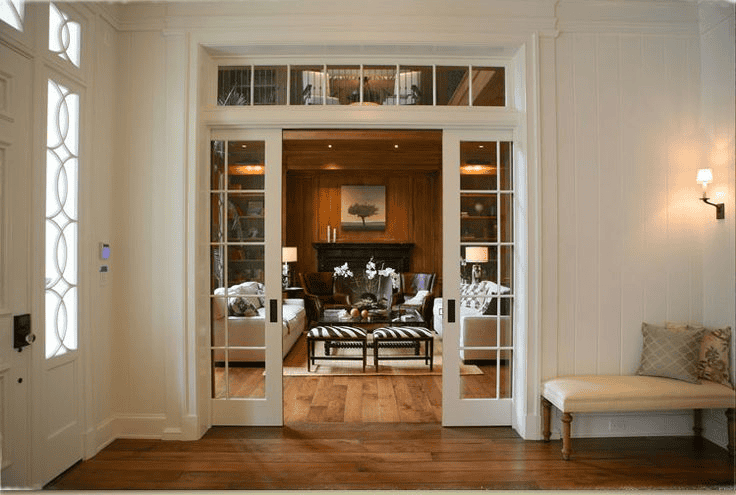
Image Source: pinterest.com
There are different types of pocket doors you can consider for your space. Your choice will depend on your privacy needs and the opening size where you want to install your door.
1) Solid Doors
Most pocket doors have solid panels fitted into a standard 36-inch opening.
2) Double Doors
Double doors are a better option if you have a wide opening. These doors slide into the opposite side walls to open and come together to close in the middle.
3) French Doors
French pocket doors are similar to double doors because there are two doors. But French pocket doors fit into a standard door opening, unlike double doors. These doors also have glass panes as a part of their construction.
Bathroom Pocket Doors Design
1) Bathroom Pocket Door with Frosted Glass
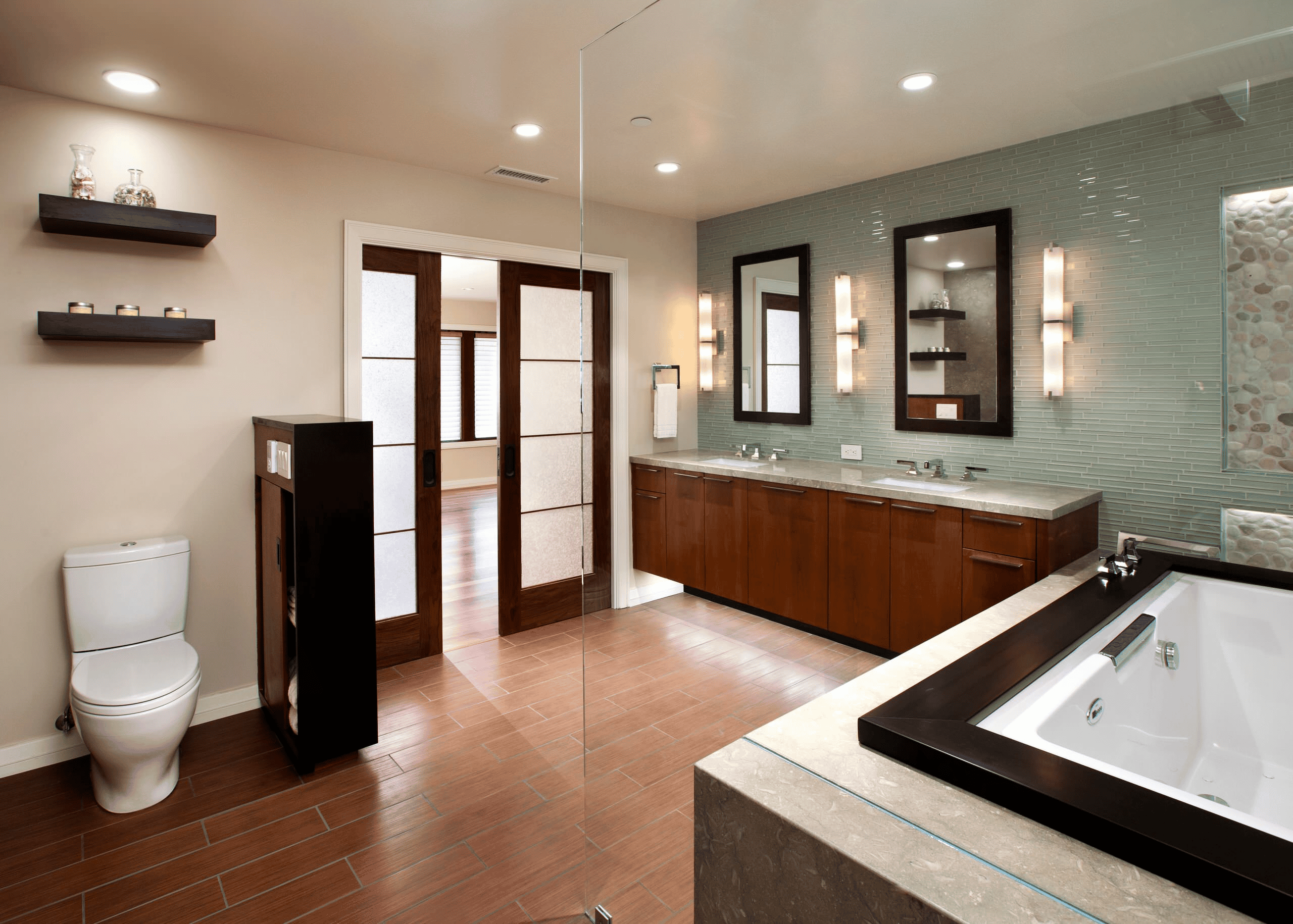
Image Source: houzz.com
A frosted glass bathroom pocket door is a great way to keep the bathroom feeling light, airy, and roomy while separating distinct regions. To increase seclusion, the frosted glass pocket door's translucent nature restricts the amount of light that passes through and blurs images.
2) Mirror Bathroom Pocket Doors
A mirrored pocket door functions as other doors but takes up no floor or wall space. When not used, a mirrored pocket door can be glided into the wall pocket. These doors can separate walk-in showers from other parts of the bathroom.
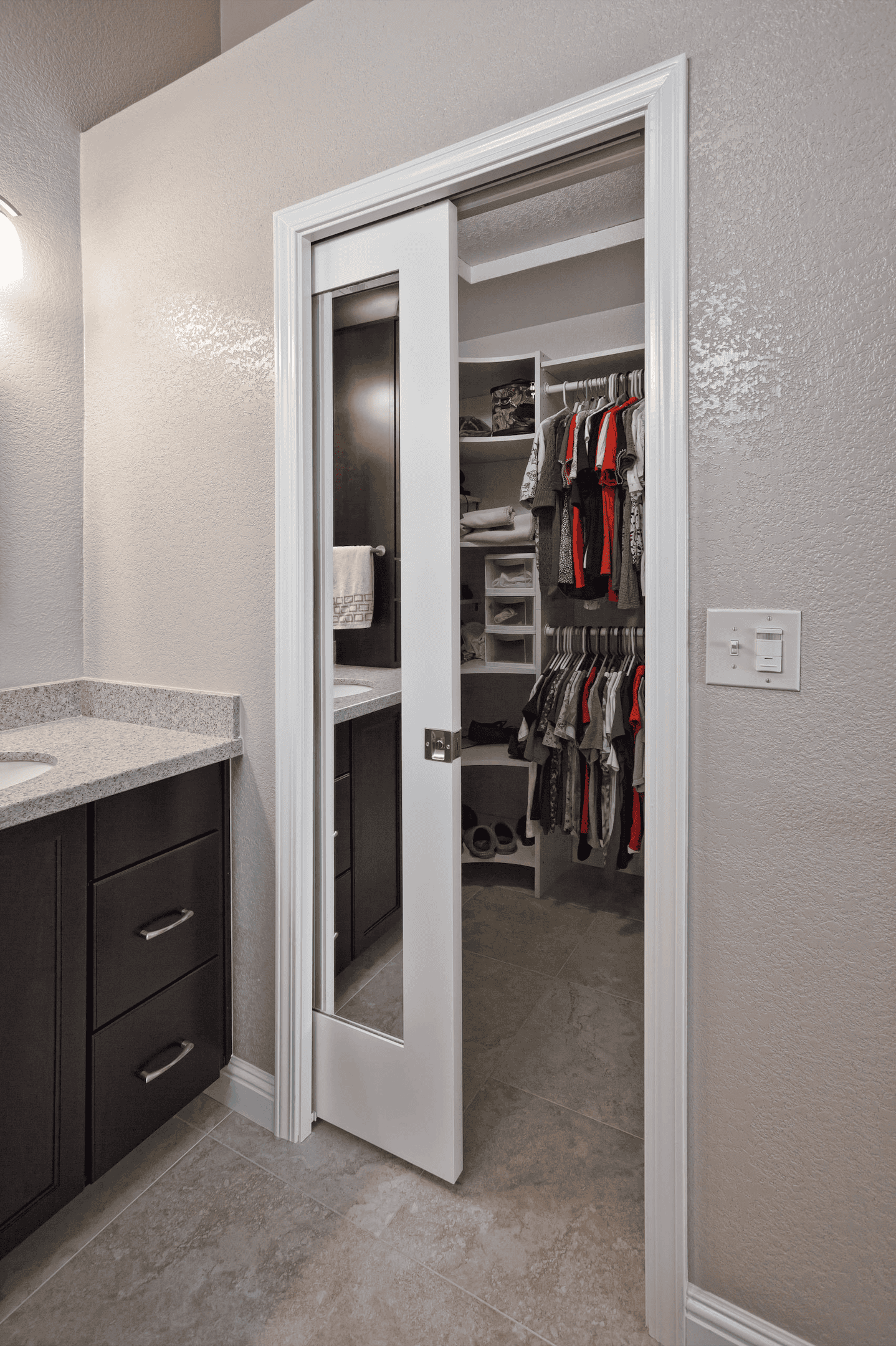
Image Source: houzz.com
Mirror pocket doors are a quick way to update a bathroom, and interior designers often use them to save space and make the bathroom appear larger. They improve the circulation of light across the space, creating the impression of a larger space.
Furthermore, mirror pocket doors are well-known for their sleek, sophisticated, and visually appealing design. They compliment any interior decor and provide the bathroom a beautiful, expensive appearance.
3) Glass Bathroom Pocket Door
A glass pocket door is a sliding glass door that fits into a depression in the adjacent wall. Glass pocket doors can save space and improve the appearance of your bathroom. They might help to open up and modernize the appearance of your bathroom because of the streamlined effect of glass. Furthermore, it enables enough of natural light into your room.
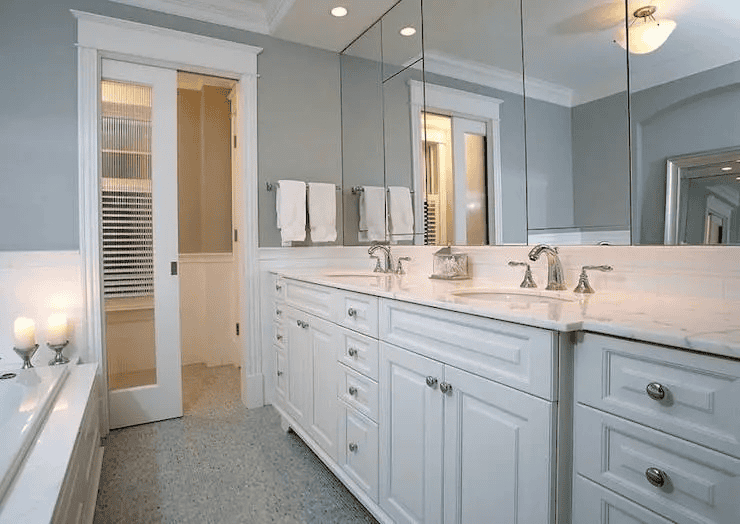
Image Source: reviewjournal.com
The advantage of a glass pocket door is that even when the bathroom door is closed, you retain the illumination and benefits of an open-plan lifestyle. This is frequent with pocket doors that connect the bathroom to the bedroom.
However, when used in bathrooms, glass pocket doors are only recommended for shower rooms with a separate main bathroom door because these glass sliding doors do not give adequate seclusion.
4) Wooden Bathroom Pocket Doors
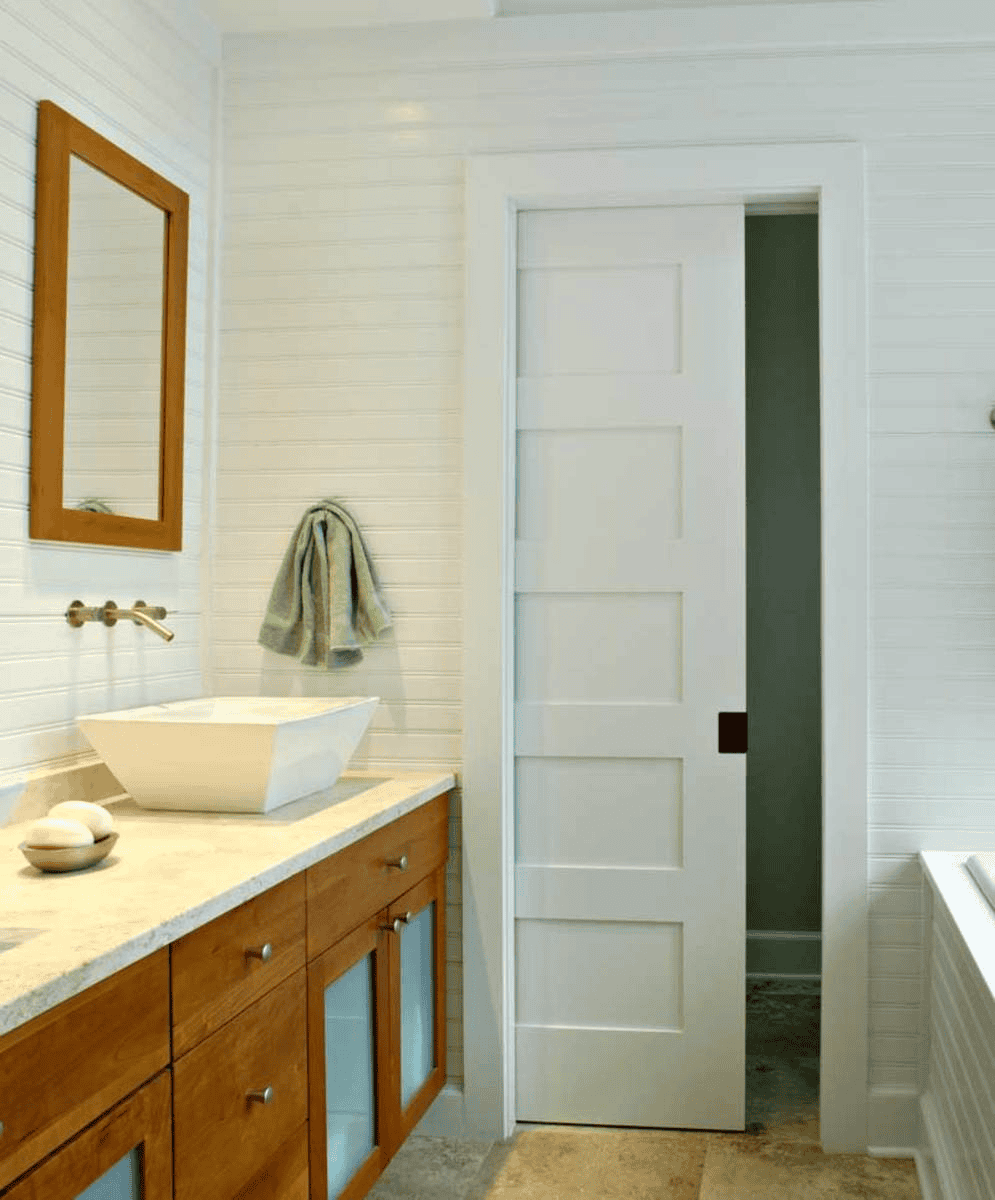
Image Source: artsandcraftshomes.com
With over 20 wood species types, you can create a unique and perfect natural aesthetic for your space. Also, wooden bathroom pocket doors are elegant and provide great functionality to your space. A solid core pocket door provides better insulation and sound sealing than a hollow door.
Advantages of Bathroom Pocket Doors
1. Pocket Doors Maximize Space in Your Bathroom
When it comes to restrooms, contractors appear to prioritize profit over convenience. This is especially true when it comes to hinged doors. A standard hinged door often requires up to 10 square feet of space to open and close.
Installing pocket doors can free up this area for new furnishings, such as additional sinks and larger cabinets. It also offers more wall space for hanging towel racks, artwork, and other items. So, when thinking of big ideas for your small bathrooms, include pocket doors in the list.
2. Pocket Doors Improve the Bathroom’s Outlook
The main reason people think about pocket doors is that they look great. Pocket doors enhance the aesthetics of both traditional and modern bathroom designs. A swinging door detracts from a room's visual appeal, however a disappearing pocket door adds flair and interest to even the most basic bathroom.
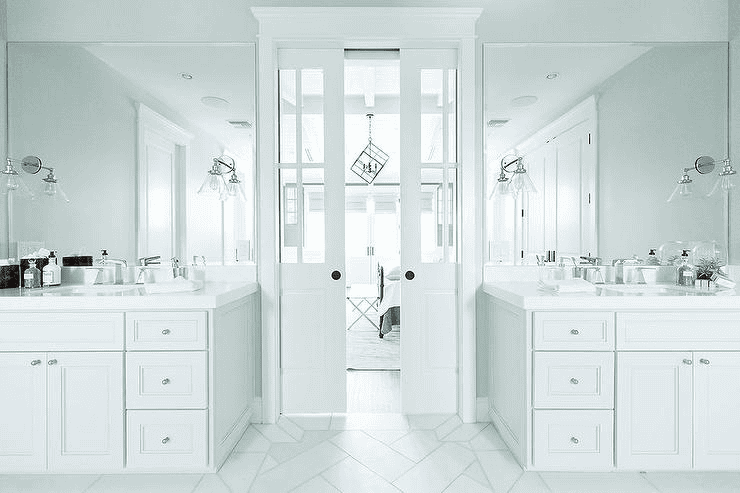
Image Source: decorpad.com
Pocket door designs such as glass are modern, contemporary, and aesthetically appealing to enhance the bathroom décor. Additionally, open pocket doors disappear in the adjacent walls preserving a minimalist appearance.
3. Pocket Doors Complement any Bathroom Décor
Pocket doors function equally well in traditional and modern bathroom designs. They can accentuate any décor and do not detract from the overall appearance of your interior design.
Disadvantages of Bathroom Pocket Doors
1. Pocket Doors Do Not Close Tightly
Unfortunately, pocket doors do not close as tightly as standard swinging doors. They also have a wider gap with the floor and do not settle as well as standard doors. As a result, they are less effective at reducing noise caused by splashing water in the bathroom.
Bathroom pocket doors also perform ineffectively in blocking off a bathroom's odor and light. However, you can prevent the noise by soundproofing your door but ensure you use a method that will not interfere with the pocket door's functionality.
2. Pocket Doors are Difficult to Maintain
Pocket doors work on tracks, and repairing the hardware can be quite complex when something goes wrong. To avoid problems, you should buy and install high-quality hardware. Before installing a bathroom pocket door, test the hardware to ensure that it works properly.
3. Not Suitable for the Physically Impaired
Pocket doors can also be more difficult to operate than traditional swing doors for individuals with particular physical impairments.
Bathroom Pocket Door Dimensions
Standard bathroom pocket doors are typically 30 to 36 inches wide and 80 inches tall, just like standard hinged doors. However, you must consider the rough aperture measurements, which are much larger. Single-pocket door panels are 24 to 40 inches wide and 80 inches tall, whereas double-pocket door panels are normally 86 inches tall and have an opening of 82 inches.
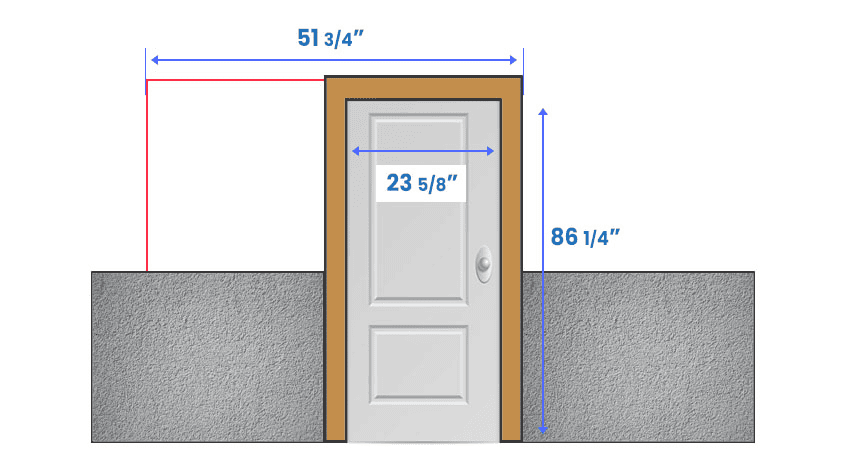
Image Source: designingmedia.com
A rough aperture is the gap needed between the studs to build the pocket door mechanism. The basic rule for rough apertures is to double the width of the pocket door panel. Depending on the size of your door, you can increase the aperture length by 1 to 1.75 inches and the height by 2.25 inches. Pocket door apertures can be 51 to 162 inches wide and 86 inches or taller.
Similarly, a rough aperture of 49.75 inches wide is required for a single-pocket door panel of 24 inches wide. The panel's height is typically 80 inches, and it fits a rough aperture of 84.5 inches. A rough aperture for a 30-inch bathroom pocket door is 61 inches wide, whereas a 36-inch pocket door has a rough aperture of 73.75 inches.
Before you start prepping your wall for a pocket door, make sure the product specifications are correct.
Frequently Asked Questions
i) Can a bathroom pocket door lock?
Yes, you can secure the bathroom by locking pocket doors. Pocket doors can lock on either one or both sides. You can also secure your bathroom pocket doors by using pocket door locks with keys.
ii) Do bathroom pocket doors block sound?
Bathroom pocket doors may not provide adequate sound isolation. They may not sit or seal as tightly as ordinary doors. As a result, they may not be helpful in keeping noise from migrating from the bathroom to adjacent rooms.
Pocket doors open and close by sliding on a track; regardless of how gently you push the door, it will make little noise as it moves.
Bottom Line
Bathroom pocket doors are increasingly popular as consumers realize how much more space and flexibility they gain by replacing their hinged door with a bathroom pocket door. Pocket doors also offer a clean visual design, giving your bathroom a more personalized appearance. They might be expensive and difficult to repair, but the stunning design is worth the effort.
Featured Image Source: designingidea.com
